12 Best Execise for Retrocalcaneal Bursitis
Table of Contents
Introduction
Exercise for Retrocalcaneal Bursitis is an important part of your overall treatment program that helps to improve the function of the heel muscles, relieve pain and keep your walking pain-free.
Retrocalcaneal bursitis(itis= inflammation) is a medical condition that reasons heel pain. It can be a weakening problem that makes walking and your daily activities difficult. You may have severe pain and swelling in the heel area. Your heel may feel tender to the touch. Some shoes can be difficult to wear. But you don’t live with the pain of this condition-(retrocalcaneal bursitis). With this informative guide, we’ll help you do just that.
Heel pain is more common than you think. Not surprisingly, it affects runners and ballet dancers, but it also occurs in about 10 percent of the general population. About a third of seniors over the age of 65 have heel pain. One of the reasons for heel pain is retrocalcaneal bursitis. It is a treatable condition that can be controlled and resolved with exercise. Other treatment options are also available.
Exercise provides you to regain the normal range of movement of the ankle and also reduces the joint and strengthening exercise making gastrocnemius, soleus, and plantaris provide strength. we understand how unpleasant retrocalcaneal bursitis can be. We are dedicated to helping you live pain-free with this comprehensive guide.
Causes
Retrocalcaneal bursitis occurs traumatically from a fall or sports-related contusion, or it can also develop gradually from repetitive bursal trauma, such as from running or overexertion.
An overachieving athlete
Tight or ill-fitting shoes that put too much pressure on the heel
Haglund’s deformity
Replaced pivot shaft
Tight muscles
Over 65 years old
Arthritis
Work that causes repetitive motion and/or joint strain
Participation in sports
Symptoms of Retrocalcaneal Bursitis
Standing on your tiptoes puts pressure on the heel, making the pain occasionally worse. The area of the pain of the heel may feel tender to touch.
redness
warmth
swelling of the skin at the back or painful area of the heel
a popping noise when the foot is bent towards the leg.
discomfort with wearing tight-fitting shoes1
Pain at the posterior part of the heel, especially when running on the hill
Increase in pain during activities which give pressure on calf muscle
a cracking sound or sensation that occurs when you bend your foot.
Wearing shoes may prove to be uncomfortable
Best Exercise for Retrocalcaneal Bursitis
Foot & Ankle Up & Down
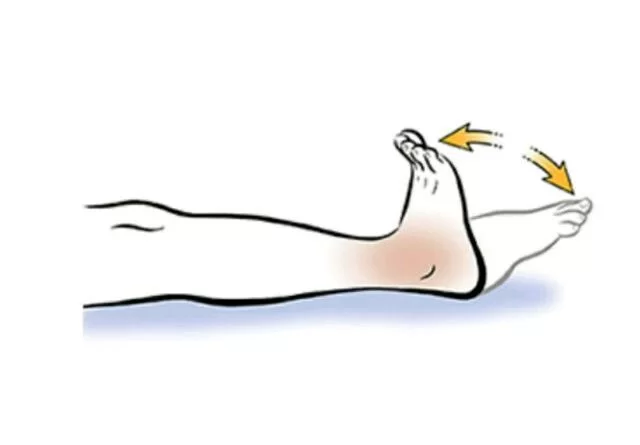
This is a very easy and basic exercise for the condition. start with the supine lying position. and then move your foot and ankle in planter flexion and extension you can do the exercises without pain(pain-free range) you have to care of the feeling mild to moderate stretch not more than that.
Repeat 40-50 times per session do 3 sets per day. the benefit of this exercise is it increases blood circulation.
Foot & Ankle In & Out
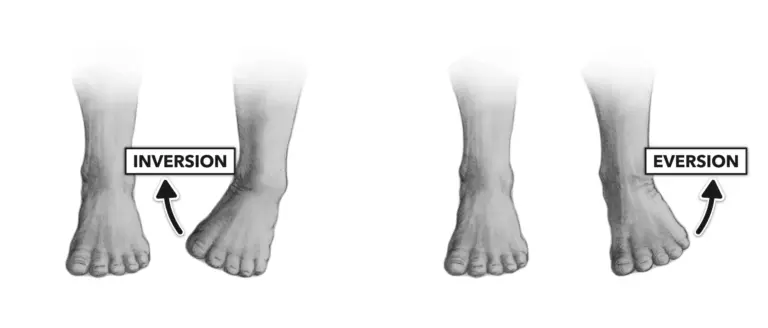
This is also easy ankle movement it’s called inversion and eversion. start with the supine position then Move your foot and ankle inside it’s called inversion and out as far as you can go it’s called eversion without pain(pain-free range) and provided you have care of the feeling of mild to moderate stretch not more than that. Repeat 40-50 times per session do 3 sets per day. this is performed actively and passively. It is to maintain or regain the normal range of the ankle.
Foot and Ankle Circles
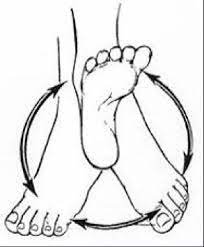
This exercise also do actively or passively. start with the supine lying position Move your foot and ankle in a circular motion with pain-free range. provided you have to care for the feeling of mild to moderate stretch. Repeat 40-50 times per session do 3 sets per day. this is performed actively and passively. It is to maintain or regain the normal range of the ankle.do this movement of the ankle joint in a pain-free range.
Achilles tendon streching
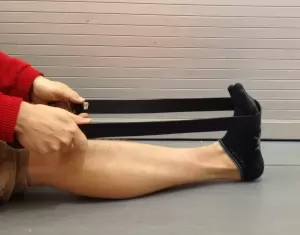
Stretching the Achilles tendon and calf muscle is an excellent exercise to decrease the pain and provide flexibility to the muscle and improve heel bursitis. Stretching the muscles that tighten the bursa will decrease (pain) your symptoms.
Stretching can be done by placing the sole of the foot against the wall with the heel resting on a soft floor surface. Lean against the wall, which you should then feel in your calf muscle or the back of your calf. You can also use a step to stretch the calf. This can be done by placing the front of the foot on the edge of the step and slowly lowering the heel with a straight leg and tensing the muscle.
Do this stretch 3 times per session, do 3 sets a day, and hold the position for about 30-60 seconds between exercises, which is essential.
Standing heel raise
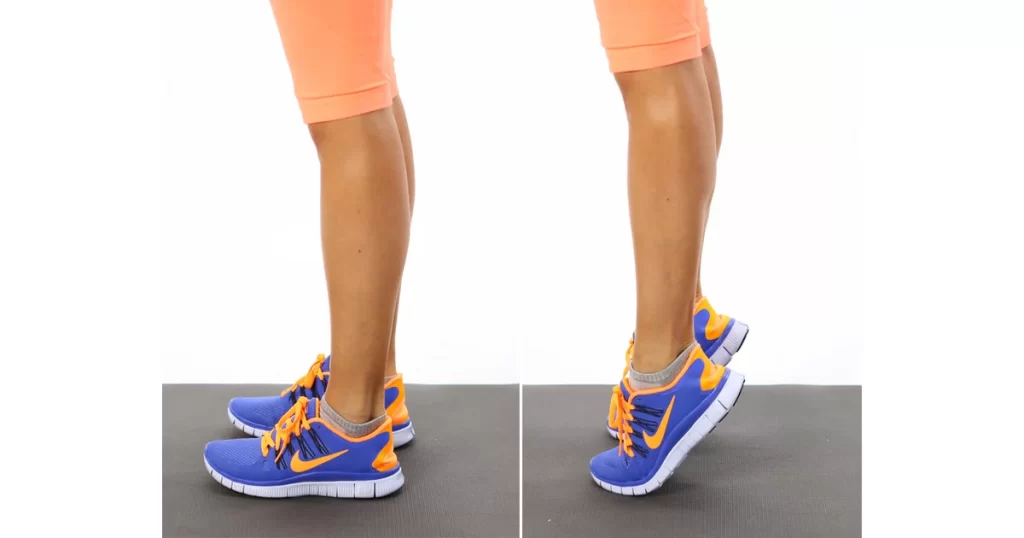
The heel exercise while standing helps to strengthen the calves and stretch the Achilles tendon. this exercise strengthens the calf muscles gastrocnemius, soleus, and planters. in a Standing position on a ground or slightly elevated surface or performed on stairs, and balance your weight on the toes of your feet. Gently lift yourself up onto your toes and hold the “peak” position for a few seconds, then lower back to the ground. You can repeat this up to 25 times in a session and do 3-4 sets a day. and hold the position for 5-10 seconds between exercises. until you feel no pain. Raise and lower yourself slowly, as controlled movement is the point of the exercise. the standing heel raise exercise you can add during progression.
Calf stretching

Stretching the Achilles tendon helps reduce pressure on the sensitive parts of the ankle near Haglund’s tubercle.
Step 1: Stand an arm’s length from the wall. start with the standing position and then slightly flex and place your hands on the wall.
Step 2: Leave one leg where it was and move the other leg forward. Lower both heels to the ground, keeping your legs straight. Lean forward until you feel a slight stretch in your back leg.
Step 3: Hold the stretch for 30 seconds, then switch sides. You can repeat this procedure five or six times a day. You can bend the back knee if necessary. Keeping your heel on the floor is more important than keeping your leg straight until you feel a stretch in the back of your leg. Do this stretch 3 times per workout, do 3 sets a day, and hold this position for about 30-60 seconds between workouts, which is essential.
Orthotics(Heel cushion)
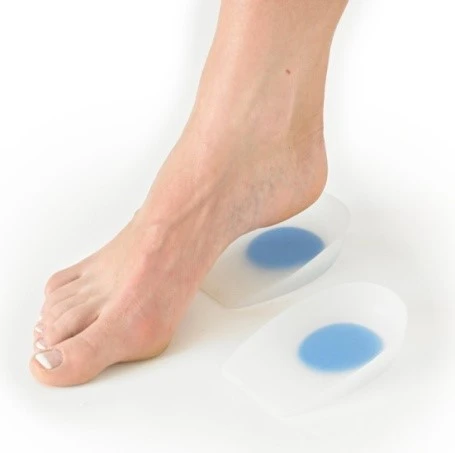
The main purpose of this orthosis is for better stability, reduce the stress on joints, improved blood circulation, and providing extra cushioning. Using heel pads in shoes can help reduce the symptoms of retrocalcaneal bursitis. you can use the heel pad or heel cushion.
If you have tight calf muscles and Achilles tendon due to heel bursitis, wearing heel wedges in your shoes can help. This is a simple gel or felt wedge that slightly elevates your heel to reduce stress on the Achilles tendon.
Most of the time, the heel wedge is no longer required after a few weeks of consistent stretching exercises. Both shoes must use heel guards so that the length of the legs does not differ, which can lead to back and knee pain. this orthosis easy available in the hospital if it is not available you can contact with orthosis department and give the order for the orthosis. they took your measurement and make perfect orthosis.
Seated plantar fascia stretch
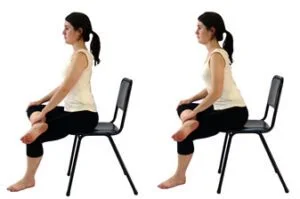
planter fascia simple stretch considered the plantar fascia. It can help increase movement or range and reduce short- and long-term heel pain to provide relaxation to the muscles.
First, you should take a Sitting position on a chair or plinth with both legs hanging from the plinth and then cross one leg over the other, with put your ankle joint free on your opposite knee and your heel should rest in the air or free.
start with the stabilization of the ankle with your hand then pull your toes used of another hand. stabilization is necessary for this stretch.
You should feel a stretch around the bottom of your foot.
you should hold this position for about 30-60 seconds which is necessary.
performed it 3 times per session and 3 sets per day.
Repeat on the other foot.
Resisted ankle eversion
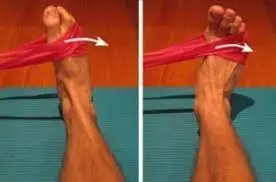
Ankle eversion exercises help you increase strength in the muscles that support your ankles and feet. This exercise is strengthening so you need a resistance band or theraband. choose the theraband according to your strength Thera-band is available in many colors according to your strength the black color theraband is very powerful.
You should start with the Sitting position on the plinth or mat with your hips straight in front of you.
Then adjust a resistance band or theraband around the middle part of your foot Or use resistance band a and make a loop and put your foot through it.
you can perform it by yourself or take the help of physiotherapy and(all ankle movement)
Move the top part of your foot inversion, eversion, and plantar flexion and extension and pull against the band or hand.
Repeat 10 times, rest, and repeat.
change the sides and repeat on the other leg.
Plantar fascia massage
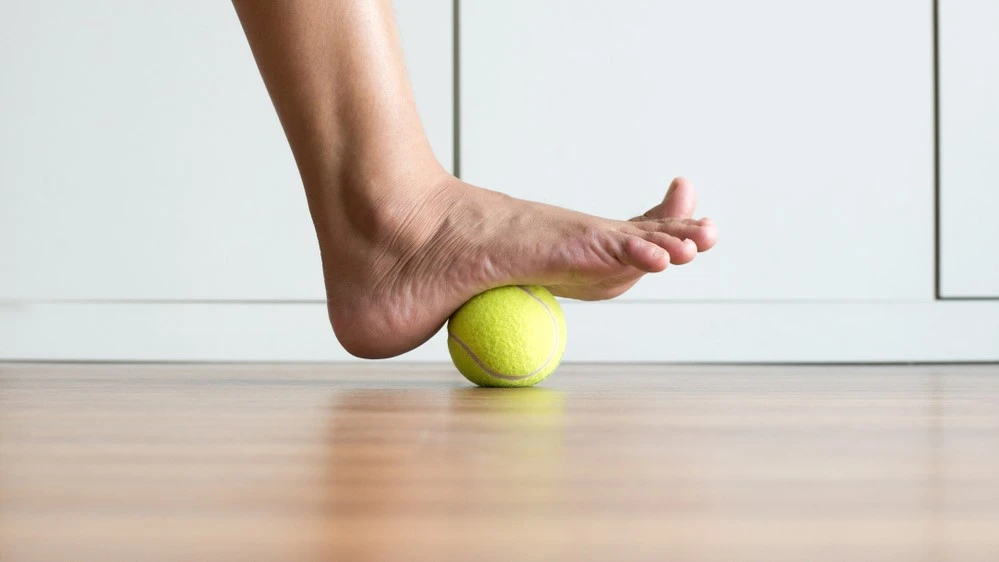
Planter fascia massaging, boosts and increase circulation, decreases pain, and improves flexibility and mobility.
First, you should take a Standing position with support or unsupported near a wall or other surface for stability.
For planter facia massage you can use a regular ball, soft roller, or water bottle under your foot for massage.
Roll the device(soft roller or golf ball) in a circular motion under your foot, do this movement from your heel to your toes which provides relaxation to your planter facia.
Roll for about 1 minute, followed by a 20-second rest in between the exercise.
Performed it 5-10 times per session and do 3 sets per day.
Toe curl exercise

This exercise strengthens the muscles of the legs and toes. start with the sitting position with your back straight in a chair with your feet on the ground. Place a towel or towel on the floor in front of you with the short end in front of your feet. Place one foot between the towel and the flexed toes (curl your toes)so that you pull the towel and start on top of the towel and ed with the bottom of the towel. Repeat six to ten times on each leg do it three sets per day which provide strength to your muscles. You can add the progression exercises by putting a small weight (such as an empty soup bowl) on the end edge of the towel.
Marble pickup exercise

This exercise strengthens the muscles of the soles and toes. starting with a Sitting position with your back straight in a chair with your feet on the floor. put 20 marbles on the floor and put a small bowl on the floor side of the marbles. then you should Pick up one marble on the floor at a time with your toes and put it in the bowl. Took all 20 marbles with your toes. and then Repeat with the other toes. Repeat six to ten times on each leg do it three sets per day
Other treatments for Retrocalcaneal Bursitis
Taping
Your physical therapist may recommend a heel taper to treat retrocalcaneal bursitis. It stabilizes and reduces pain in the area. The tape, which is placed on the back of the heel, can be used for 5-7 days to relieve symptoms.
Medicines
The pain and other symptoms associated with retro calcific bursitis can be managed with medications, usually oral nonsteroidal anti-inflammatory drugs, called NSAIDs for short. You probably know these drugs as commonly prescribed pain relievers such as ibuprofen and naproxen. The medication is used to treat retrocalcaneal bursitis symptoms in conjunction with a rehabilitation programme. Sometimes topical anti-inflammatory medications such as diclofenac ointment or cream may be prescribed to relieve local heel pain.
Shoes and footwear
Changing shoes can be an important part of treating retrocalcaneal bursitis. You should consider wearing open-toe shoes for a while, as this relieves pressure on the heel. Sometimes retrocalcaneal bursitis condition occurs when you suddenly switch your footwear from high heels to flat shoes mostly seen in models. It may be a good idea to temporarily use a medium interest to relieve symptoms.
Athletes should purchase comfortable and suitable shoes regularly because the support and fit can change at any time because of the profession, especially with continued use. Your physiotherapist may suggest putting the orthosis heel cushion under the inflamed heel for better stability, reducing the stress on joints, improving blood circulation, provide extra cushioning.
Exercises to avoid in Retrocalcaneal Bursitis
Plyometrics: Plyometrics, including jumping exercises or activity, is one of the most uncomfortable exercises for your heels and arches recovering from heel spurs. The exercises contain short bursts of energy that bring muscle control and strength in different jumps. . while plyometric exercise can also create opportunities to stretch the mucosa and damage the heel.
Running or jogging: Running and jogging are two common causes of heel pain. When the leg is lifted and it hits the floor with each step, the amount of impact is many times greater than when walking.
Burpees: Burpees may be fierce, but they are the second worst exercise for heel pain or spurs. Burpees include squats, plank, push-ups, half squats, and switch to plank. Because these exercises involve many quick movements, it creates a network of joints in the leg. or leg impairment.
Impact Sports: Ice hockey and basketball are two of the most impactful sports for teenagers and adults. This vigorous sport can pose a high risk of worsening heel pain. Both sports require a lot of running (resulting in heel pain), high stress on the plantar fascia, and many rapid changes in foot movement, all of which lead to minor tears and injuries.
Cardio Dance and Aerobics: Cardio dance and aerobics can be fun exercises. while cardio you mostly press the leg, they can also cause heel pain from the magnitude of the impact and fast footwork. Cardio dance and aerobics involve a lot of leg movement and a lot of jumping, which can cause inflammation, pain, and tension in the fascia.
Factors to the development of retrocalcaneal bursitis
There are several factors that can predispose a patient to this condition. These should be assessed and corrected under the guidance of a physiotherapist and may include:
poor foot biomechanics (particularly flat feet)
inappropriate footwear (e.g. excessively tight-fitting shoes)
muscle weakness (those muscles that are attached to the calcaneus bone such as the calf, quadriceps, and gluteals)
muscle tightness (particularly the calf)
joint stiffness (subtalar joint of the ankle)
bony anomalies of the heel bone
inappropriate or excessive training or activity
inadequate recovery periods from sports or activity
insufficient warm-up
inadequate rehabilitation following a previous Achilles injury
change in training conditions or surfaces
inappropriate running technique
inadequate fitness
Precaution during Exercise
Stop stretching and exercise if you feel any discomfort or pain while exercising.
Start the exercise in a proper procedure, give proper stretch to the muscles, give proper hold, and give proper repetition with the correct intensity.
If your physiotherapy is advised you should take a rest. if you feel pain while exercising.
Wear loose or comfortable clothes while exercising which remove orthosis and provide free movement to your body.
Provide stretching exercises to the tight muscle you feel uncomfortable but you should never feel stabbing pain or sharp pain during stretching.
You should never hold your breath in between the exercise. starting of exercise, you should take a deep inhale and slowly exhale. holding your breath in between exercises increases the tension in your muscle which causes to increase in blood pressure.
A note from Samrapan Physiotherapy Clinic
If you are suffering from this condition so first consult with the doctor and start the medication and physiotherapy treatment. both treatments give u great results in the worst condition.
For this condition starting with treatment from progressive stretching(with proper duration and hold in between exercises) of the calf muscle and Achilles tendon may benefit to relieve pain in the retrocalcaneal bursitis. The stretch is held in between the stretch for about 30-60 seconds which is necessary and then is relaxed.
Physiotherapy treatment includes soft tissue massage (particularly to the calf muscles), joint mobilization (of the ankle, subtalar joint, and foot), dry needling, electrotherapy (e.g. ultrasound), stretches, the use of heel wedges, the use of crutches, arch support taping, ice or heat treatment, exercises to improve strength, flexibility, balance, and core stability, biomechanical correction (e.g. the use of orthotics).
FAQ
How is bursitis treated?
Rest the affected area. Avoid such activity which gives excess or give direct pressure that may cause pain.
Apply ice or cold packs as soon as when you notice pain and swelling in your muscles or near a joint. …
Use pain relievers. …
you should performed range-of-motion exercise each day …
Avoid tobacco smoke.
Heat therapy includes superficial heat such as infrared therapy or normal hot water therapy which is used for relief of the pain of bursitis. Apply cryotherapy (ice) for decreasing the swelling around the affected area may be the first 48 hours after symptoms occur. you can use dry or moist heat, such as a heating pad, or deep your affected area in warm water.
pain around the ankle joint
swelling and reducing the range of motion of the ankle joint
a cracking sound or sensation that occurs when you bend your foot.
While bursitis you can also use the superficial massage method you can require a foam roller, softball, or get a massager machine, but avoid the deep massage technique which affects the bursa; they will just make it worse because rubbing and massaging on the bursa also occurence of compression.
You can use the strokes of effleurage method it is the superficial method of massage that increases blood circulation. the superficial massage method also reduces inflammation.
If you are thinking about running with this condition or heel bursitis, it depends on how worse your heel pain is and how much it is related to Achilles tendinitis. If running makes your bursitis or Achilles tendonitis worse, stop running until you can run without pain.
Some stretches: Some stretches can make hip bursitis worse. The certain IT band stretches, such as crossing your leg while lying on one side of your body, can worsen hip bursitis pain, as can any aggressive lateral stretch (such as deep side bends).

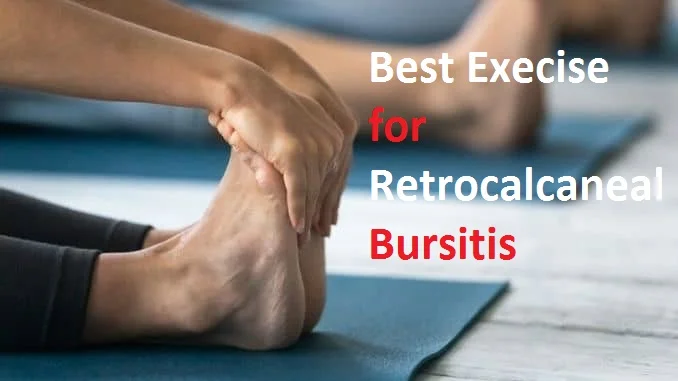
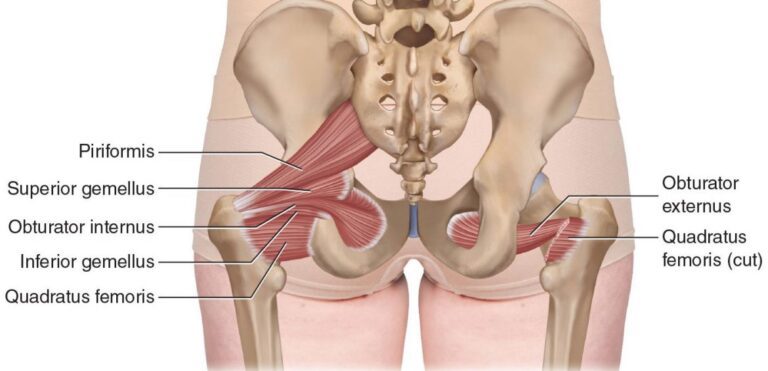

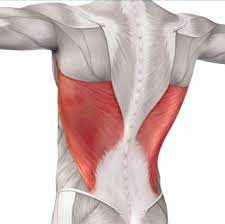

One Comment